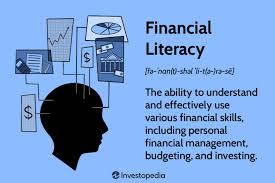
- Giving kids the skills and habits they need to make wise financial decisions throughout their lives is the goal of financial literacy,
- which goes beyond simply teaching them about money. Children are better able to handle their money sensibly, stay out of debt, and make future plans when they comprehend how money works.
Why Begin Early?
When presented in straightforward, developmentally appropriate ways, children can understand financial concepts with surprising ease. Early education is essential because research indicates that financial habits are primarily formed by the age of seven. By introducing financial literacy at a young age, we help children develop a healthy relationship with money, reduce financial anxiety, and foster independence.
Essential Teachings for Saving and Spending
It is fundamental to teach children the distinction between needs and wants. Teach them that saving for something they truly want is more important than making rash purchases. Delays in gratification can be taught even with a basic piggy bank.
Making Money
Earning money, whether through lemonade sales or chores for an allowance, teaches children that money comes from hard work.
Basics of Budgeting
Children should be taught how to budget their money. Simply classifying funds into three categories—save, spend, and give—can serve as a basic budget. This practice fosters self-control and helps people steer clear of the dangers of excessive spending in later life.
Comprehending Debt and Credit
It’s crucial to introduce children to the concepts of credit, loans, and interest as they get older. Before students receive their first credit card or school loan, this helps them understand debt and teaches them how to borrow properly.
Establishing Financial Objectives
A great technique to teach long-term planning is through goal-setting. A financial goal, whether it’s saving for a new video game or a bicycle, encourages commitment, tenacity, and a sense of achievement.
The Function of Teachers and Parents
When it comes to financial education, parents and educators are crucial. Commonplace activities, such as opening a savings account, budgeting for a family vacation, or grocery shopping, can be transformed into effective teaching opportunities. The stigma and mystery that frequently envelop money can be lessened by promoting candid discussions about it.
Resources and Tools
Financial literacy may now be taught using a variety of resources, including books, school programs, and kid-friendly banking apps and online games. Make learning enjoyable and interesting by utilizing these resources.
Concluding remarks
- Beginning with simple lessons, financial literacy is a gift that lasts a lifetime.
- In addition to preparing children for maturity, teaching them money management skills gives them the self-assurance to make wise decisions in other facets of their lives.
- Our children will be better prepared to handle the financial world with competence and confidence if we begin early.
- Would you prefer this to be written with a particular tone (more informal, academic, inspirational) or for a particular target (parents, teachers, financial institutions, etc.)?
Leave a Reply